PC Power & Cooling Silencer 750 Quad CF-Edition
by Christoph Katzer on July 18, 2007 1:00 AM EST- Posted in
- Cases/Cooling/PSUs
Efficiency
PCP&C states an efficiency of 83% on the package of this power supply, but they don't indicate what input voltage is required to reach this 83% rating. Thankfully, after testing we can say that these "up to 83% efficiency" claims are understated.
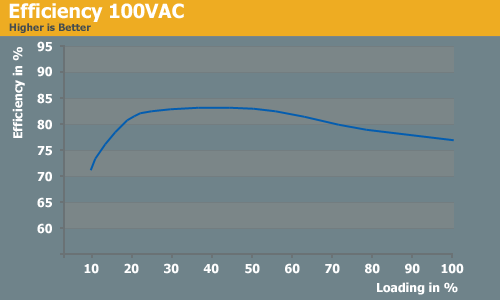
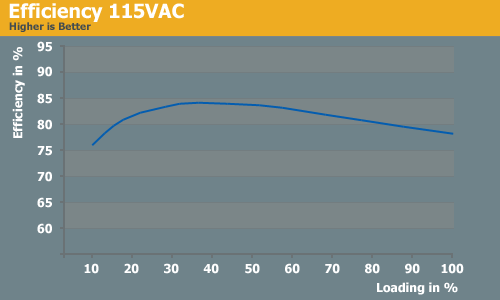
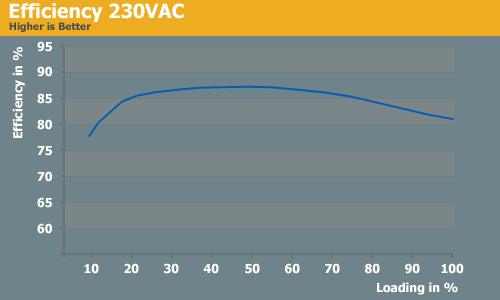
Even with an input voltage of only 100VAC we measured efficiency of up to 84%. This is the highest efficiency we have seen so far in seven years of working in this field. Two years ago Topower showed us a power supply that achieved up to 90% efficiency, but unfortunately it never made its way to market since it would have cost $200 USD for just 400W. With 230VAC the efficiency is always higher and this time we see up to 86% efficiency with only a 300W load. That's an impressive result with any of the input voltages.
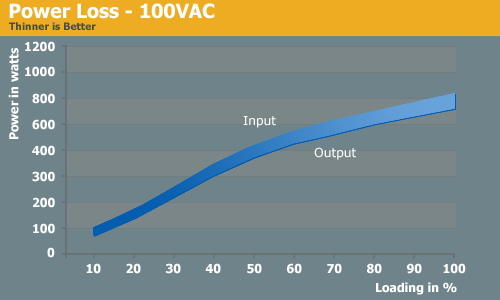
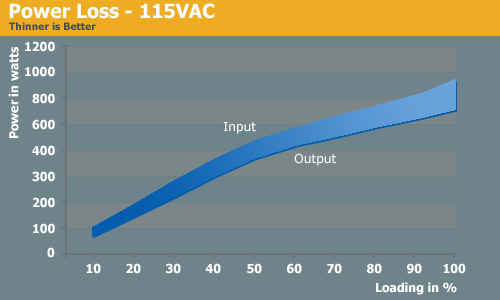
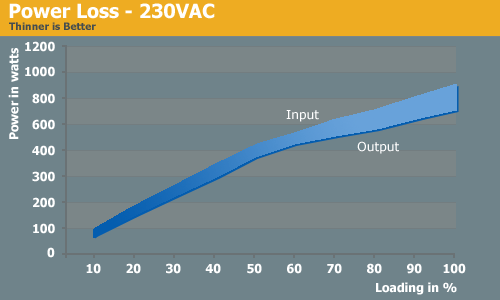
As a result of this high efficiency, the power loss is very small. The results at 230VAC are always a little bit better than at lower input voltages, as power loss is simply another way of looking at efficiency.
PCP&C states an efficiency of 83% on the package of this power supply, but they don't indicate what input voltage is required to reach this 83% rating. Thankfully, after testing we can say that these "up to 83% efficiency" claims are understated.



Even with an input voltage of only 100VAC we measured efficiency of up to 84%. This is the highest efficiency we have seen so far in seven years of working in this field. Two years ago Topower showed us a power supply that achieved up to 90% efficiency, but unfortunately it never made its way to market since it would have cost $200 USD for just 400W. With 230VAC the efficiency is always higher and this time we see up to 86% efficiency with only a 300W load. That's an impressive result with any of the input voltages.



As a result of this high efficiency, the power loss is very small. The results at 230VAC are always a little bit better than at lower input voltages, as power loss is simply another way of looking at efficiency.










31 Comments
View All Comments
Christoph Katzer - Wednesday, July 18, 2007 - link
Thanks, was of course wrong. I changed it now.